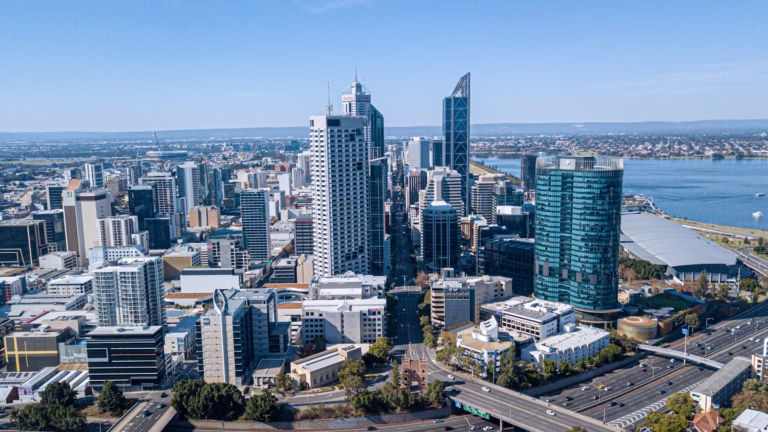In an increasingly interconnected and digital world, the security of critical infrastructure has become a top priority for governments, businesses, and communities. Critical infrastructure refers to the physical and cyber systems that are vital to the functioning of a nation’s economy, security, and public health. In Australia, safeguarding these assets is essential to ensuring the safety and well-being of the population, as well as maintaining national security.
For organisations involved in the management or protection of critical infrastructure, implementing robust security measures is not just a regulatory requirement—it’s a necessity.
What is Critical Infrastructure?
Critical infrastructure includes a wide range of assets, systems, and networks that are essential to the functioning of society.
These can be broadly categorised into several sectors:
- Energy: Power plants, electricity grids, oil and gas pipelines, and other energy supply systems are crucial for providing the energy needed to power homes, businesses, and essential services.
- Water and Waste Management: Water treatment facilities, reservoirs, and waste management systems are vital for providing clean water and managing waste, which are essential for public health and environmental protection.
- Transportation: Airports, seaports, railways, and road networks are key components of the transportation sector, enabling the movement of people and goods across the country.
- Telecommunications: Communication networks, including telephone systems, internet infrastructure, and broadcasting facilities, are critical for maintaining connectivity and supporting emergency communications.
- Health Services: Hospitals, medical supply chains, and emergency response systems are essential for providing healthcare and responding to medical emergencies.
- Financial Services: Banks, payment systems, and financial markets are integral to the stability and functioning of the economy.
- Government Services: Government buildings, databases, and communication networks support the functioning of government operations and public services.
These sectors are interconnected, and a disruption in one can have cascading effects on others. For example, an attack on the energy grid could impact water supply, transportation, and healthcare services, leading to widespread disruption and potential harm to the population.
The Importance of Security for Critical Infrastructure
The security of critical infrastructure is crucial for several reasons:
- National Security: Critical infrastructure is often targeted by malicious actors, including cybercriminals, terrorists, and hostile nation-states. Attacks on these systems can disrupt essential services, weaken national security, and cause widespread panic and economic instability.
- Public Safety: The failure of critical infrastructure can have dire consequences for public safety. For instance, a prolonged power outage could lead to hospital equipment failures, water supply disruptions, and transportation gridlock, endangering lives and causing significant harm.
- Economic Stability: Critical infrastructure is the backbone of the economy. Disruptions to financial services, transportation, or energy supply can lead to significant economic losses, affecting businesses, consumers, and the overall economy.
- Regulatory Compliance: In Australia, there are stringent regulations governing the protection of critical infrastructure. Organisations responsible for these assets must comply with these regulations to avoid penalties and ensure the continued provision of essential services.
Threats to Critical Infrastructure
Critical infrastructure faces a wide range of threats, both physical and cyber. Understanding these threats is the first step in developing effective security measures.
- Cyber Attacks: As critical infrastructure becomes more interconnected and reliant on digital systems, the risk of cyber attacks increases. Hackers can exploit vulnerabilities in software and networks to gain control of critical systems, disrupt operations, steal sensitive data, or cause physical damage.
- Physical Attacks: Physical attacks on critical infrastructure, such as sabotage, terrorism, or theft, can cause significant damage and disrupt essential services. For example, an attack on a power plant or water treatment facility could lead to widespread outages or contamination.
- Insider Threats: Employees or contractors with access to critical infrastructure can pose a significant risk if they intentionally or unintentionally compromise security. Insider threats can involve sabotage, theft, or the accidental disclosure of sensitive information.
- Natural Disasters: Natural disasters, such as floods, bushfires, and earthquakes, can cause severe damage to critical infrastructure. Protecting these assets from environmental hazards is a key aspect of infrastructure security.
- Supply Chain Disruptions: Critical infrastructure is often dependent on complex supply chains. Disruptions to these supply chains, whether due to cyber attacks, natural disasters, or other factors, can impact the availability of essential goods and services.
Security Measures for Critical Infrastructure
Protecting critical infrastructure requires a comprehensive approach that integrates physical security, cyber security, and risk management.
Here are some key security measures that organisations can implement:
- Risk Assessment and Management: Conducting a thorough risk assessment is the first step in protecting critical infrastructure. This involves identifying potential threats, assessing vulnerabilities, and evaluating the potential impact of disruptions. Based on this assessment, organisations can develop risk management strategies to mitigate these risks.
- Physical Security Measures: Physical security is essential for protecting critical infrastructure from physical attacks and natural disasters. This includes securing perimeters with fences and barriers, installing surveillance cameras and alarm systems, and controlling access to sensitive areas with key cards or biometric systems. Regular security patrols and the presence of security personnel can also deter potential attackers.
- Cyber Security Measures: Protecting critical infrastructure from cyber attacks requires a multi-layered approach. This includes implementing firewalls, intrusion detection systems, and encryption to protect networks and data. Regular software updates and patches are essential to address vulnerabilities, while employee training on cyber security best practices can help prevent phishing and other social engineering attacks.
- Incident Response Planning: Preparing for potential incidents is crucial for minimising the impact of an attack or disruption. Incident response plans should outline the steps to be taken in the event of a security breach, including communication protocols, containment measures, and recovery procedures. Regular drills and exercises can help ensure that staff are prepared to respond effectively in a crisis.
- Supply Chain Security: Ensuring the security of supply chains is critical for maintaining the availability of essential goods and services. This involves working with suppliers to identify and mitigate risks, implementing security measures throughout the supply chain, and developing contingency plans for potential disruptions.
- Collaboration and Information Sharing: Protecting critical infrastructure is a shared responsibility that requires collaboration between government, industry, and other stakeholders. Information sharing on threats, vulnerabilities, and best practices is essential for staying ahead of emerging risks. Organisations should participate in industry forums, collaborate with government agencies, and establish partnerships with other critical infrastructure operators.
- Compliance with Regulations: In Australia, critical infrastructure is subject to a range of regulations designed to ensure its security. These include the Security of Critical Infrastructure Act 2018, which requires organisations to report cyber incidents and implement risk management programs. Compliance with these regulations is essential for protecting critical infrastructure and avoiding legal penalties.
The Role of Security Consultants in Protecting Critical Infrastructure
Given the complexity of protecting critical infrastructure, many organisations turn to professional security consultants for guidance. Security consultants bring specialised expertise and experience in risk management, physical security, and cyber security, helping organisations develop and implement effective security strategies.
Security consultants can assist organisations in conducting risk assessments, developing security plans, and implementing physical and cyber security measures. They can also provide training and support for incident response planning, supply chain security, and regulatory compliance.
At Smartsec Security Solutions, we specialise in providing comprehensive security consulting services for critical infrastructure in Perth and across Australia. Our team of experienced consultants works closely with organisations to assess their security needs, develop tailored strategies, and implement practical solutions that address their unique challenges.
Feel Free to Reach Out
Protecting critical infrastructure is essential for ensuring the safety, security, and well-being of Australia’s population. At Smartsec Security Solutions, we are committed to helping organisations safeguard their critical assets through expert security consulting services.
If you’re ready to enhance the security of your critical infrastructure, reach out to Smartsec Security Solutions today. Our experienced consultants are here to help you assess your risks, develop tailored strategies, and implement the necessary measures to protect your organisation. Learn more about our services and how we can assist you by visiting our Services page. Let us help you ensure the security and resilience of your critical infrastructure, so you can focus on what matters most—keeping Australia safe and secure.



